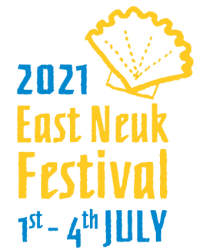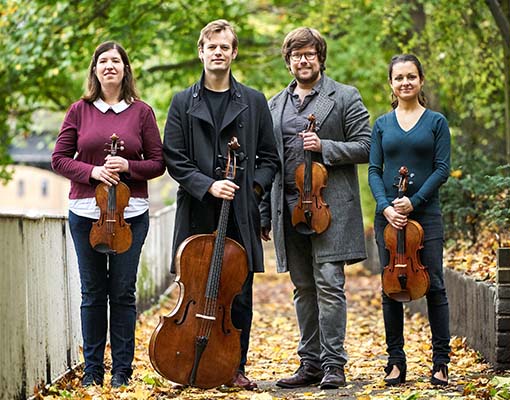
 United Kingdom East Neuk Festival 2021 – Felix & Fanny Mendelssohn: Castalian Quartet (Sini Simonen, Daniel Roberts [violin], Charlotte Bonneton [viola], Christopher Graves [cello]). The Bowhouse, St Monans, Fife, 4.7.2021. (SRT)
United Kingdom East Neuk Festival 2021 – Felix & Fanny Mendelssohn: Castalian Quartet (Sini Simonen, Daniel Roberts [violin], Charlotte Bonneton [viola], Christopher Graves [cello]). The Bowhouse, St Monans, Fife, 4.7.2021. (SRT)
Felix Mendelssohn – String Quartet No.6 in F minor
Fanny Mendelssohn – String Quartet in E flat
Live music in Scotland has restarted, and I cannot tell you how much joy it gives me to write those words. As I mentioned before (click here), Scotland’s regulations on gatherings and live performance have been much more restrictive than those elsewhere in the UK, and last summer there was none of the reopening that our friends elsewhere in Britain enjoyed. However, the corner has been turned. It’s still just a trickle, but the dam has cracked.
It is a blessing to the point of being blissful that one of the first festivals to reopen is Fife’s East Neuk Festival. Across the Firth of Forth from Edinburgh, the East Neuk of Fife is the name given to a series of ancient villages on the coast south of St Andrews, blessed with some unfeasibly scenic coastal views across to East Lothian and the North Sea. Festival director Svend-Einar McEwan-Brown has built up connections with both up-and-coming and well-established European artists over the years, and one of the festival’s chief glories is hearing these musicians in ancient churches and tiny halls while the summer sun streams in through the windows.
No tiny venues this year: the pandemic has put paid to that. However, many of the festival’s specially filmed performances do manage to recapture some of the spirit of those intimate performances, and they can currently be viewed for free until 1st August (click here).
So all of this year’s in-person concerts took place in the Bowhouse, a huge market hall by the village of St Monans, most often used as a farmer’s market. However, as I mentioned in 2019 (click here), it is a surprisingly successful concert venue, and chamber music sounds very good in it.

This year’s resident quartet was the Castalian Quartet, and their tone sounded bright, clean and gorgeous in the Bowhouse’s resonant space. Saturday saw them playing Beethoven’s first and Dvořák’s last string quartets, and they played quartets by the Mendelssohn siblings on Sunday. However, in a nice quirk, the programme didn’t specify which one was by Felix and which was by Fanny; a canny attempt to reclaim Fanny from the patriarchy. Instead the audience was invited to listen without prejudice and vote at the end as to which quartet we thought was by which composer.
I knew in advance, but I still don’t think it would have been difficult to tell which was which. Felix’s final quartet is a torrent of anguish, written as a lament for the death of his sister, and it achieves a level of mastery that his sister was never permitted to attain. It is a shame for Fanny’s talent but, due to circumstances we cannot now change, Felix’s music is far more assured.
Both were taken equally seriously by the Castalians, however, paying both composers a compliment in the process. Felix’s quartet was surging, febrile and energetic, with a brilliant tightening of tension towards the end of both its outer movements, and a hushed, beautiful slow movement that provided only a little respite.
While his quartet is a frenzy of emotion, Fanny’s is more about purity of feeling and refinement of technique, the emotions viewed as though at one remove. What’s there is still very beautiful, though, and was played by the Castalians with classical poise in the first movement and a touch of Felix’s fairy music in the scherzo. Only in the keening, intense slow movement was there much serious competition to Felix, though the harum-scarum antics of the Finale: Allegro molto retained an edge of seriousness.
As a sign of the festival’s diversity, it also hosted the Fergus McCreadie Trio, whose brand of jazz carries hints of Scottish traditional music but moves seamlessly between relaxation and high energy without ever revealing the join. What begins as a lullaby is transformed into a joyous blaze of energy, and hosting these artists, fresh out of the conservatoires, is a welcome sign of the festival’s continuing commitment to young artists.
This year’s festival was slimmed down to just a weekend, but it’s an exquisite weekend and, as I said at the beginning, the dam has been cracked. Unless something goes terribly wrong, the trickle will turn to a flood with the return of the Edinburgh International Festival next month. I cannot wait.
Simon Thompson